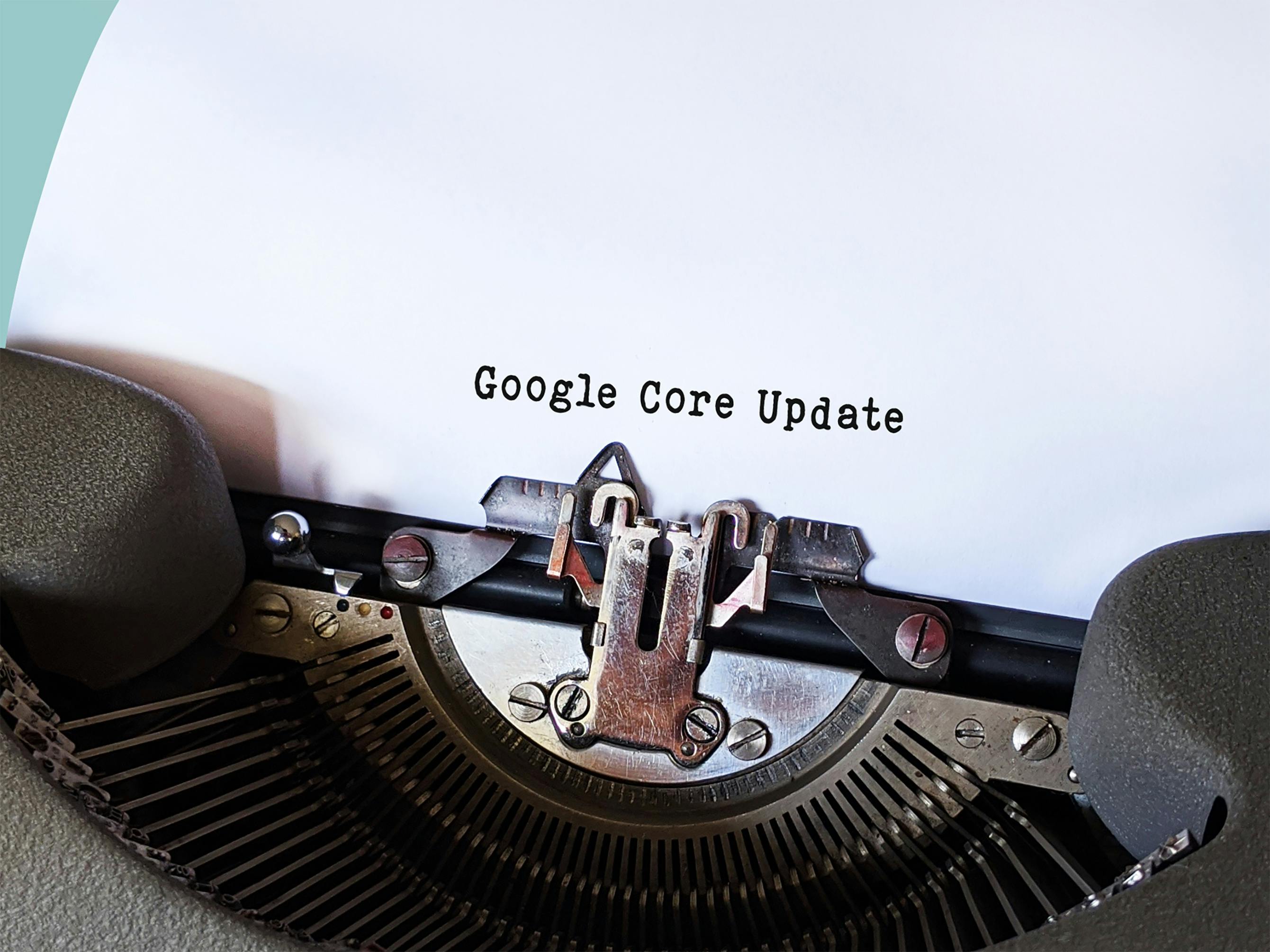Unlocking the true potential of structured data in Google News can dramatically transform how your content performs in search results. Ever wondered why some news articles skyrocket to the top while others barely get noticed? The secret lies in leveraging Google News structured data markup to enhance visibility and drive massive traffic. This article dives deep into the role of structured data in Google News performance, revealing powerful insights that every publisher and content creator must know today.
In today’s fast-paced digital landscape, simply publishing news isn’t enough. You need to harness the power of rich snippets for Google News and understand how properly formatted structured data for news articles can improve your content’s discoverability. By implementing schema markup for Google News, you can help search engines better understand your articles, leading to enhanced display features like carousels and rich cards. But how exactly does this impact your Google News SEO strategy? And what are the must-know best practices that can unlock new opportunities for audience engagement and monetization?
Stay tuned as we uncover the latest trends on optimizing news content with structured data, explore real-world examples, and answer burning questions like: How can structured data boost your rankings in Google News? What mistakes should you avoid when adding schema markup? Whether you’re a digital marketer, journalist, or site owner, understanding the critical role of structured data in Google News will give you a competitive edge and unlock powerful insights to elevate your news content performance like never before.
How Structured Data Boosts Google News Visibility: Top Strategies for Publishers

How Structured Data Boosts Google News Visibility: Top Strategies for Publishers
In the fast-moving world of online news, getting your articles seen by the right audience is always a struggle. Google News plays a huge role in that, pushing relevant stories to millions of readers daily. But many publishers don’t realize how much structured data can impact their visibility there. Yes, structured data might sound technical and boring, but it’s actually a powerful tool that helps Google understands your content better, leading to more traffic and engagement. In this article, we will explore how structured data boosts Google News visibility, the role it plays, and some top strategies you can use as a publisher to unlock its potential.
What Is Structured Data and Why It Matters for Google News?
Structured data means organizing your webpage content in a way that search engines can easily read and interpret. It’s like giving Google a cheat sheet about what your page is about. Without it, Google has to guess the context which sometimes lead to misinterpretation or lower rankings.
Google News specifically relies on structured data to decide what stories to show, in what format, and where. This can include details about the article’s headline, author, publish date, images, and more. By providing these details in a standardized format (usually using schema.org vocabulary), publishers help Google News categorize and showcase their stories correctly.
Historical context: Structured data became more widely used after Google introduced rich snippets around 2010, but its importance grew significantly when Google News started incorporating more personalized and multimedia content around 2018. Since then, publishers who implement structured data often see better indexing and increased visibility.
The Role Of Structured Data In Google News Performance
Google News performance depend on many factors like relevance, freshness, and authority, but structured data directly influence how your content is presented. Here are some key roles it plays:
- Improved Indexing: Structured data helps Google find and index your stories faster and more accurately.
- Enhanced Snippets: Articles can show up with rich snippets, including images, publication date, and even article ratings.
- Eligibility for Special Features: Structured data allow your content to be included in Google News carousels, Top Stories, and AMP (Accelerated Mobile Pages) sections.
- Better User Experience: When Google displays clear and appealing previews of your articles, users are more likely to click through.
- Increased Credibility: Accurate author and publisher information shown through structured data can boost trust.
Top Structured Data Strategies For Publishers To Boost Google News Visibility
If you want to get more eyes on your news stories, here are some practical strategies to implement structured data effectively:
Use NewsArticle Schema
This is the most important schema type for news publishers. It tells Google your content is a news article and includes properties like headline, datePublished, author, and image.Include Publisher and Author Info
Specify your organization with the “publisher” property and individual authors with “author” schema. This can improve trustworthiness and help Google show author profiles.Mark Up Multimedia Content
News is not just text. Use structured data to tag videos, images, and audio files inside your articles to make them eligible for rich media carousels.Implement AMP With Structured Data
Accelerated Mobile Pages load faster and often rank better on mobile. Combining AMP with correct structured data boosts your chances of appearing in prominent Google News placements.Keep Structured Data Up-To-Date
News changes fast, so your structured data must reflect the latest publish dates and updates. Old or incorrect data can hurt visibility.Use Google’s Structured Data Testing Tool
Before publishing, check your markup with Google’s tool to catch errors and warnings that might block your content from appearing in Google News.
Comparison: Structured Data vs. Traditional SEO For News Publishers
| Aspect | Structured Data | Traditional SEO |
|---|---|---|
| Focus | Helps search engines understand content context | Focuses on keywords and backlinks |
| Impact on Google News | Directly influences news-specific features | Indirectly influences rankings |
| Complexity | Requires technical markup knowledge | Mostly content and link building |
| Result | Rich snippets, better indexing, and visibility | Higher organic ranking |
| Maintenance | Needs regular updates and validation | Requires ongoing content updates |
Practical Examples Of Structured Data Impact On Google News
- A New York-based publisher added NewsArticle schema to their daily reports. Within weeks, their stories started appearing in Google News Top Stories carousel, leading to a 30% increase in traffic.
- An independent journalist marked up author information and social profiles, which helped build a personal brand and increased click-through rates in Google News.
- A media company integrated video content with proper VideoObject schema and saw their news videos featured in Google News video snippets, driving more engagement
7 Proven Ways Structured Data Enhances Google News Performance and User Engagement

In the fast-changing world of digital marketing, staying ahead means mastering every tool that can boost your online presence. One of the most powerful yet often overlooked tools is structured data, especially when it comes to Google News. For businesses in New York trying to improve their visibility and engage users better, understanding how structured data works with Google News is crucial. Let’s dive into the 7 proven ways structured data enhances Google News performance and user engagement, and explore the role it plays unlocking powerful insights.
What Is Structured Data and Why It Matters?
Structured data is a standardized format for providing information about a page and classifying the page content. It helps search engines like Google understand what the content is about. Think of it like giving Google a detailed map of your content so it can navigate and display it better in search results. Without structured data, Google has to guess what your content means, which can lead to lower visibility or improper categorization.
Historically, search engines relied mostly on keywords and meta tags, but as the web grew, so did the complexity of information. Structured data was introduced as a way to make things clearer for search engines, leading to better indexing and richer search results.
7 Proven Ways Structured Data Enhances Google News Performance and User Engagement
- Improved Content Visibility in Google News Carousel
Google News uses structured data to identify news articles accurately. By marking up articles with proper schema (like NewsArticle or Article types), your stories are more likely to appear in the Google News carousel on mobile and desktop, giving them prime real estate and more clicks.
- Facilitates Rich Snippets and Enhanced Search Features
Structured data enables rich snippets, which include things like headline, image, date published, and author info directly in search results. This visual appeal makes users more likely to click through to your content, increasing engagement.
- Better Categorization and Topic Relevance
By using structured data, Google can better understand the topic and category of your article. This means your news stories get shown to the right audiences interested in that subject, boosting user satisfaction and time spent on your site.
- Faster Indexing and Real-Time Updates
Google News prioritizes fresh content. Structured data helps Google find and index new articles faster, ensuring your breaking news reaches readers quickly before competitors do.
- Enhanced Mobile Experience
Google News heavily caters to mobile users. Structured data helps create mobile-friendly formats that load faster and display better, which reduces bounce rates and improves engagement.
- Supports Multimedia Content Recognition
If your news articles include images, videos, or audio, structured data tags help Google recognize and showcase these media types in search results, making your content richer and more attractive.
- Unlocks Analytics and Insights
Using structured data allows better tracking of how your content performs on Google News. Marketers can gather insights about click-through rates, impressions, and user behavior, which informs future content strategies.
The Role Of Structured Data In Google News: Unlock Powerful Insights
Structured data doesn’t just enhance how content is shown; it also unlocks valuable insights for businesses. For digital marketing companies in New York, this means better understanding of audience preferences and behavior, enabling smarter decisions.
For instance, by analyzing which types of articles with structured data perform best in Google News, marketers can tailor their content calendar and optimize headlines or images accordingly. This data-driven approach leads to higher engagement and return on investment.
Breaking Down Structured Data Types Commonly Used in Google News
| Structured Data Type | Purpose | Example Use Case |
|---|---|---|
| NewsArticle | Marks up news content | Latest breaking news stories |
| Article | General article markup for various content | Opinion pieces, features |
| ImageObject | Defines images within articles | Thumbnail images in snippets |
| VideoObject | Specifies video content | Embedded news videos |
| Author | Provides author details | Journalist or contributor information |
| DatePublished | Indicates when the article was published | Important for time-sensitive news |
Knowing which schema to implement and how to do it correctly can make a big difference in Google News performance.
Practical Example: How A New York Local News Outlet Improved Their Reach
A local news website in New York City started implementing structured data across their articles last year. Before, their news stories rarely appeared in Google News carousel, and click-through rates were low. After adding NewsArticle schema and optimizing images and author data, they saw these changes:
- A 40% increase in traffic from Google News
- More articles featured in the top stories carousel
- Higher user engagement with longer session durations
This example shows how practical application of structured data directly impacts news performance.
Comparing Google News With and Without Structured Data
| Feature | Without Structured Data | With Structured Data |
|---|---|---|
| Article |
Unlocking Powerful Insights: The Impact of Schema Markup on Google News Rankings

Unlocking Powerful Insights: The Impact of Schema Markup on Google News Rankings
Businesses and publishers in New York trying to get the best visibility on Google News often overlook one vital tool: schema markup. This small snippet of code can have big effects on how news articles perform in search results. But what exactly is schema markup, and why it matters so much for Google News rankings? Let’s dive into this topic and explore the role of structured data in boosting your news content’s performance.
What is Schema Markup?
Schema markup, also called structured data, is a kind of code that you add to your website. It helps search engines understand the content better by providing context about the information on the page. For news articles, schema can tell Google when the article was published, who wrote it, what the headline is, and more.
This structured data uses a vocabulary created by Schema.org, a collaboration between Google, Bing, Yahoo, and Yandex. When search engines read this markup, they can display rich snippets, enhance content visibility, and improve indexing accuracy.
Historical Context: How Structured Data Evolved in Google News
Back in early 2010s, Google started experimenting with rich snippets and structured data to improve search experience. For news publishers, this meant an opportunity to stand out in crowded search results. Over time, Google News began to rely more heavily on schema markup to determine which articles qualify for special features like Top Stories carousel.
Before structured data, Google News rankings were mostly influenced by traditional SEO factors such as keywords, backlinks, and freshness. But now, schema markup adds another layer, giving publishers a way to “communicate” directly with Google’s algorithms.
The Role of Structured Data in Google News Rankings
Structured data influence Google News performance in several important ways:
- Improved Article Interpretation: Schema helps Google accurately identify article components like headlines, author names, publish date, and images.
- Eligibility for Rich Results: Articles with proper markup can appear with enhanced features such as AMP badges, images, and carousels.
- Better Indexing Speed: Structured data signals can speed up how fast your articles get discovered and indexed by Google News.
- Increased Click-Through Rates: Enhanced listings with rich snippets attract more clicks from users.
- Reduced Errors and Misclassification: Without schema, Google might misunderstand article content, affecting rankings negatively.
Key Types of Schema Markup for News Websites
There are several schema types relevant for news content. Some important ones include:
- Article
- NewsArticle
- BlogPosting
- Person (for author info)
- ImageObject (for images)
- Publisher (organization info)
Using the correct type and properties in the markup is crucial. For example, NewsArticle schema specifically supports news content and includes properties like dateline and datemodified, which can affect how Google News treat your article.
Practical Examples: How to Implement Schema Markup
Imagine you run a digital marketing agency in New York and publish daily news updates about local business trends. Adding schema markup might look like this in practice:
- Add JSON-LD code in the HTML header or body of each news article page.
- Include properties like headline, author name, datePublished, image URL, and publisher details.
- Use Google’s Structured Data Testing Tool to validate markup before publishing.
- Monitor Google Search Console to check for errors related to structured data.
Comparing Schema Markup vs Traditional SEO for News
| Factor | Traditional SEO | Schema Markup (Structured Data) |
|---|---|---|
| Focus | Keywords, backlinks, site speed | Context, metadata, content structure |
| Visibility | Standard search listings | Rich snippets, carousels, AMP badges |
| Indexing | Based on crawling | Enhanced signals for faster indexing |
| User Engagement | Depends on title and snippet | Improved click rates due to rich results |
| Complexity | More content and link building | Technical implementation of code |
While traditional SEO still important, schema markup adds a powerful dimension that can’t be ignored for Google News success.
Tips for New York Publishers to Maximize Google News Performance
- Always keep your structured data up-to-date with each article.
- Don’t mix news content with unrelated schema types.
- Use AMP (Accelerated Mobile Pages) alongside schema for better mobile experience.
- Regularly audit your news site with Google Search Console for structured data issues.
- Collaborate with digital marketing experts who understand local New York news ecosystem and technical SEO.
Unlocking the full potential of schema markup requires ongoing effort but the payoff is worth it. Especially in a competitive market like New York, standing out on Google News can drive significant traffic and brand awareness. Structured data isn’t just a technical add-on; it’s a strategic asset for publishers wanting to boost their visibility and credibility on the web.
Why Structured Data Is a Game-Changer for Google News SEO in 2024

Why Structured Data Is a Game-Changer for Google News SEO in 2024
If you been working in digital marketing or news publishing, you might have heard about structured data many times by now. But why this buzz around it becoming a total game-changer for Google News SEO in 2024? Well, structured data is basically a standardized format to provide information about a page and classify the content. It helps search engines like Google to understand your news articles better. Without it, Google sometimes struggle to figure out what your news really is about, which can hurt your visibility. As Google News is a huge traffic source for many news outlets and local digital marketing companies in New York, using structured data properly is becoming super important.
What Is Structured Data and Why It Matters?
Structured data is like adding labels to your content so Google’s algorithms can easily read and interpret it. Instead of just seeing plain text, Google can understand details such as:
- The headline of the news article
- Date published
- Author name
- Article type (news, opinion, review)
- Images and videos related to the news
- Location or event details
Back in early 2010s, Google introduced schema.org, which is a collaborative effort to standardize how websites markup their data. Using schema markup helps Google display rich snippets, enhanced search results, and in Google News, it can improve your chances to get featured in Top Stories or news carousels.
The Role Of Structured Data In Google News: Unlock Powerful Insights
Google News isn’t just about showing latest headlines, it’s about delivering relevant, trustworthy, and timely content to readers. Structured data helps Google to:
- Quickly identify the credibility of your news articles
- Understand the context around news events, like location or involved people
- Sort and categorize news better for personalized user experiences
- Highlight important updates or breaking news faster
For digital marketing firms in New York focusing on local news, this means using structured data can unlock powerful insights about what kind of content performs best in Google News. By tracking which structured data types correlate with higher visibility, you can tailor your content strategy to maximize reach.
How Structured Data Boosts Google News Performance
Google News performance is measured by how often your articles appear in search results, how many clicks they get, and how users interact with your content. Structured data improves these metrics by:
- Increasing click-through rates (CTR) with rich results that stand out
- Helping Google show your articles in relevant news carousels and Top Stories
- Enhancing mobile search experience with visually appealing snippets
- Reducing bounce rates as users find exactly what they look for
Here’s a quick comparison to illustrate:
| Aspect | Without Structured Data | With Structured Data |
|---|---|---|
| Visibility in Google News | Limited, generic listings | Higher chances in Top Stories |
| Click-Through Rate (CTR) | Lower due to plain snippets | Higher via rich snippets |
| User Engagement | Lower, users may bounce off | Higher, relevant info shown |
| Search Result Appearance | Basic text links | Enhanced with images, dates |
Practical Examples for Local Digital Marketing Companies in New York
Imagine you’re a local news website covering events in NYC. You publish an article about a new subway line opening. Without structured data, Google might just show the headline and URL. But with proper structured data markup:
- The news article shows the exact publish date
- The author’s name and organization appear
- Images of the subway line are displayed
- Location tags (New York City) help Google place your article in local search results
Another example, if you cover breaking news like a sudden storm or traffic accident, using structured data can help your article appear in the Breaking News section on Google News faster than competitors who don’t use markup.
How To Implement Structured Data For Google News SEO
If you want to get started, here’s a simple outline:
- Choose the right schema type: For news, “NewsArticle” or “Article” is most common.
- Include key properties:
- headline
- image
- datePublished
- author
- publisher
- Use JSON-LD format recommended by Google
- Test your markup using Google’s Rich Results Test tool
- Monitor Google Search Console for errors or enhancement suggestions
Many CMS platforms, like WordPress, offer plugins that simplify adding structured data without coding.
Historical Context: How Structured Data Evolution Impacted Google News
Originally, Google News relied mostly on algorithms scanning plain text for keywords and headlines. This led to many irrelevant or low-quality articles showing up. Over time, Google started pushing for more transparency and clarity with structured data. The introduction of schema.org in 2011 was a major milestone, and since then Google News has progressively rewarded publishers who follow best practices with
Step-by-Step Guide to Implementing Structured Data for Maximum Google News Traffic

If you run a news website or blog in New York, you probably heard about how Google News can drive tons of traffic to your pages. But getting noticed in Google News is not just about writing good content anymore. The role of structured data in Google News is becoming huge, and if you don’t implement it right, you might miss out big time. This step-by-step guide gonna help you understand how to use structured data for maximum Google News traffic, and why it matters so much for your site’s performance.
What Is Structured Data and Why It Matters in Google News?
Structured data, in simple words, is a way to mark up your website’s content with special tags that search engines like Google can easily understand. Think of it like putting labels on your news articles to explain what they are about, who wrote them, when they were published, and other important details. Google uses this information to show your news stories in rich formats, like carousels or top stories sections, making your articles more visible and attractive.
Historically, before structured data became popular, Google would just rely on basic signals like keywords and backlinks to rank news articles. But as online news grew more competitive and complex, Google introduced structured data standards like Schema.org to help it better understand news content. In 2018, Google News started encouraging news publishers to add structured data to improve their indexing and appearance in search results.
The Role Of Structured Data In Google News: Unlock Powerful Insights
Using structured data does more than just improve your rankings. It unlocks powerful insights about your audience and content performance. When your articles are properly marked up:
- Google can show your headlines with images and other rich elements.
- Your news stories appear in specialized sections like Top Stories, enhancing click-through rates.
- You get better tracking on how users interact with your news through Google Search Console.
- It helps Google News algorithms to categorize your content more accurately, so the right readers find you.
Without structured data, your articles might still show up in Google News, but you are missing out on these enhancements that drive traffic and engagement.
Step-by-Step Guide to Implementing Structured Data for Maximum Google News Traffic
Here’s a practical, easy-to-follow outline to add structured data to your news website:
Choose the Right Schema Markup
- For news articles, the main schema type is “NewsArticle.”
- Other related types include “Article,” “BlogPosting,” and “Report.”
- Use Schema.org vocabulary to find the correct properties.
Identify Key Properties to Include
- headline: Title of the article.
- datePublished: When the article was published.
- dateModified: Last update date.
- author: Author’s name.
- publisher: Your news organization with logo.
- image: Main image URL.
- description: A short summary or excerpt.
Add Structured Data Using JSON-LD Format
- JSON-LD is Google’s preferred method because it doesn’t interfere with the site’s content.
- Insert the JSON-LD script in the head or body of your HTML pages.
Validate Your Structured Data
- Use Google’s Rich Results Test tool or Schema Markup Validator.
- Fix any errors or warnings before going live.
Submit Your Site to Google News Publisher Center
- This helps Google recognize your site as a news publisher.
- Provide accurate information about your publication.
Monitor Performance and Fix Issues
- Check Google Search Console for structured data reports.
- Update your markup if you change your website design or content structure.
Comparison: Structured Data vs. No Structured Data in Google News
| Feature | With Structured Data | Without Structured Data |
|---|---|---|
| Visibility in Google News | Higher, with rich snippets | Lower, basic appearance |
| Click-through Rate (CTR) | Improved due to enhanced display | Generally lower |
| Categorization by Google | Accurate and fast | Less precise |
| Access to Google Insights | Detailed reports available | Limited data |
| Mobile-friendly presentation | Optimized and rich | Basic layout |
Practical Example: A Local News Site in New York
Imagine you run “NY Daily Buzz,” a digital marketing company blog that also covers local news. You publish an article about New York’s subway system delays. Without structured data, Google might just show your article title and URL. But with proper NewsArticle structured data, your article can appear with the headline, a thumbnail image of the subway, the author’s name, and publication date. It makes your story stand out in Google News, attracting more clicks from commuters searching for updates.
Tips for New York Digital Marketers to Leverage Structured Data
- Always keep your news content fresh and accurate; structured data works best with timely
Conclusion
In conclusion, the integration of structured data plays a pivotal role in enhancing a website’s visibility and performance within Google News. By implementing schema markup, publishers enable Google to better understand the content, context, and relevance of their news articles, which can lead to improved indexing, richer search results, and increased click-through rates. Structured data not only helps in categorizing news stories accurately but also supports features like rich snippets and carousel displays, making content more engaging and accessible to readers. As news consumption continues to evolve in the digital age, leveraging structured data is no longer optional but essential for publishers aiming to stand out in a competitive landscape. To maximize your Google News presence and reach a broader audience, investing time and resources in structured data implementation is a strategic move that can yield long-term benefits. Start optimizing your news content today to unlock its full potential and drive sustainable growth.










































